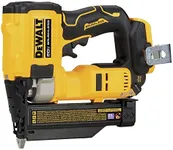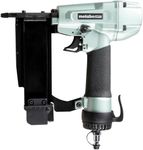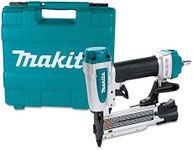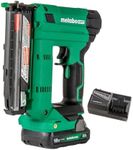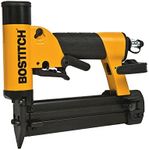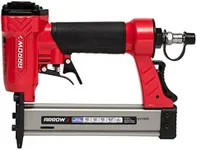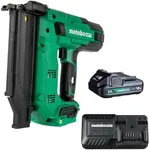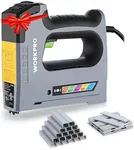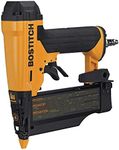Buying Guide for the Best Pin Nailers
Pin nailers are essential tools for woodworking, carpentry, and various DIY projects. They are designed to drive small, thin nails (pins) into wood and other materials, providing a clean and professional finish without leaving noticeable holes. When choosing a pin nailer, it's important to consider several key specifications to ensure you select the right tool for your needs. Understanding these specs will help you make an informed decision and get the best performance from your pin nailer.Nail Size CompatibilityNail size compatibility refers to the range of pin lengths that the nailer can handle. This is important because different projects may require different nail lengths. Pin nailers typically accommodate nails ranging from 1/2 inch to 2 inches. For delicate trim work or small crafts, shorter nails (1/2 inch to 1 inch) are ideal. For more substantial projects like cabinetry or furniture assembly, longer nails (1 inch to 2 inches) may be necessary. Choose a pin nailer that supports the nail sizes you anticipate using most frequently.
Magazine CapacityMagazine capacity indicates the number of nails the pin nailer can hold at one time. This is important for efficiency and convenience, as a larger capacity means fewer reloads during your project. Pin nailers typically have magazine capacities ranging from 100 to 200 nails. For small, quick tasks, a lower capacity may suffice. However, for larger projects or professional use, a higher capacity will save time and increase productivity. Consider the scale of your projects to determine the appropriate magazine capacity for your needs.
Power SourcePin nailers can be powered by different sources, including pneumatic (air-powered), electric (corded or cordless), and gas. The power source affects the tool's portability, power, and convenience. Pneumatic pin nailers are powerful and reliable but require an air compressor, making them less portable. Electric pin nailers are convenient and portable, with cordless models offering the most mobility, though they may have limited power compared to pneumatic models. Gas-powered pin nailers are also portable and powerful but require fuel cartridges. Choose a power source based on your work environment and mobility needs.
Weight and ErgonomicsThe weight and ergonomics of a pin nailer affect user comfort and ease of use, especially during extended periods of work. Lighter pin nailers reduce fatigue and are easier to maneuver, making them ideal for detailed or overhead work. Ergonomic designs with comfortable grips and balanced weight distribution enhance control and reduce strain. If you plan to use the pin nailer for long durations or intricate tasks, prioritize models that are lightweight and ergonomically designed to ensure comfort and precision.
Depth AdjustmentDepth adjustment allows you to control how deeply the nails are driven into the material. This is important for achieving a clean finish and preventing damage to the workpiece. Some pin nailers offer tool-free depth adjustment, making it easy to fine-tune the nail depth on the fly. For projects requiring precise nail placement, such as trim work or fine woodworking, a pin nailer with adjustable depth settings is essential. Consider the types of materials and finishes you work with to determine the importance of this feature.
Jam Clearing MechanismA jam clearing mechanism helps you quickly and easily remove nails that get stuck in the nailer. This is important for maintaining workflow and preventing damage to the tool. Some pin nailers have tool-free jam clearing mechanisms, allowing you to resolve jams without additional tools. If you frequently work on large projects or in professional settings, a pin nailer with an efficient jam clearing mechanism can save time and reduce frustration. Evaluate the likelihood of encountering jams in your work to decide if this feature is necessary.
